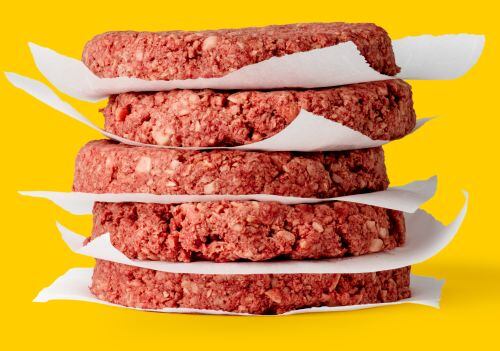A protein found in nodules attached to the roots of nitrogen-fixing plants such as soy that is similar to myoglobin and hemoglobin (which make blood look red), leghemoglobin is what "makes meat taste uniquely like meat," according to Impossible Foods, which produces it via a genetically engineered yeast – the DNA of which has been retooled to produce leghemoglobin.
The yeast feeds on sugar from plants and produces leghemoglobin with a fraction of the environment footprint of field-grown soy (the final product contains no live yeast).
While Impossible Foods has always insisted the ingredient is safe, the FDA had asked the company for more information when it reviewed its first GRAS determination in 2015, noting that Impossible Foods' arguments did “not establish the safety of SLH for consumption, nor do they point to a general recognition of safety.”
As there is no history of widespread consumption of leghemoglobin from the roots of the soybean plant, said the FDA, Impossible Foods based its safety arguments on its structural and functional equivalence to other widely consumed globin proteins, arguing that heme B-containing globin proteins “have been safely consumed throughout human history.”
However, “Conformational similarity or functional similarity among proteins is not an indication of the safety of proteins for consumption,” claimed the agency, which also had questions about other proteins that might be expressed along with the soy leghemoglobin during the yeast fermentation.
Second GRAS determination included new invitro and animal studies as well as a literature review
Since that 2015 exchange, after which Impossible Foods withdrew its GRAS notice (GRN 540), it has taken significant steps to prove its heme is safe, and notified the FDA of a second GRAS determination (GRN 737) in October 2017.
While the original GRAS determination was based primarily on a literature review, the 2017 determination included results from two rat studies, plus various invitro tests including a chromosome aberration test on human lymphocytes (a genotoxicity test in cultured cells to assess whether leghemoglobin might be capable of causing chromosome damage or mutagenicity).
The company also voluntarily submitted its test data via two scientific articles to the peer-reviewed journals International Journal of Toxicology and Molecular Nutrition, and Food Research.
FDA: No further questions...
This time, it seems, the FDA was satisfied, writing to the company to say: “We have no questions at this time regarding Impossible Foods’ conclusion that soy leghemoglobin preparation is GRAS under its intended conditions of use to optimize flavor in ground beef analogue products intended to be cooked.”
The FDA also noted that soy leghemoglobin could be considered a color additive in some potential future applications (which requires firms to file a petition), said the company: “Impossible Foods is preparing to engage in that process to ensure it has maximum flexibility as its products and business continue to evolve.”
“Getting a no-questions letter goes above and beyond our strict compliance to all federal food-safety regulations,” said Impossible Foods CEO Dr Pat Brown, Professor Emeritus of Biochemistry at Stanford University. “We have prioritized safety and transparency from day one, and they will always be core elements of our company culture.”

The Impossible Burger – which debuted in July 2016 at Momofuku Nishi in New York and has since been introduced at 3,000+ restaurants across the country from White Castle to Umami Burger – is the brainchild of Stanford biochemist and genomics expert Pat Brown, PhD, MD, who has described industrialized meat production as "the most destructive technology on Earth."
At Impossible Foods, the key components of meat have been identified, characterized and sourced from plants such as soy, wheat and potatoes, and processed using high-moisture extrusion and other techniques in order to meet precise functional, taste and textural criteria.
Impossible Burger ingredients list: Water, Textured Wheat Protein, Coconut Oil, Potato Protein, Natural Flavors, 2% or less of: Leghemoglobin (soy), Yeast Extract, Salt, Soy Protein Isolate, Konjac Gum, Xanthan Gum, Thiamin (Vitamin B1), Zinc, Niacin, Vitamin B6, Riboflavin (Vitamin B2), Vitamin B12.
